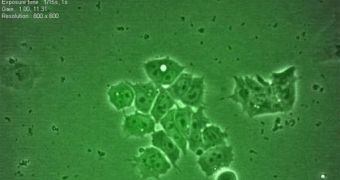Spanish experts from the Universitat Politecnica de Catalunya (UPC), working together with colleagues from the University of Cambridge (UC), have managed to discover the genetic circuit that in essence controls the behavior of stem cells and determines traits such as differentiation and pluripotency. UPC School of Industrial and Aeronautical Engineering of Terrassa (ETSEIAT) Department of Physics and Nuclear Engineering Lecturer Jordi Garcia Ojalvo has been the one who has discovered the mechanism.
The new finds cast some doubts over established knowledge, which has it that stem cells are in their natural state inert, in that they require an external stimulus in order to start differentiating into the various types of cells that make up the human body. This ability to turn themselves into any other type of cells is called pluripotency, and is the trait that geneticists rely on to eventually develop a technology that would enable health care providers to grow artificial organs that would replace damaged ones.
Working together with Alfonso Martínez Arias's research group at the UC, Garcia-Ojalvo determined that the stem cells were not naturally in a neutral, static state, but that they changed constantly. Additionally, the two discovered that a subset of stem cells existed that ensured a level of “alertness.” This means that, as soon as the signals telling the cells to differentiate arrive, the process begins, as the cells are, in fact, already on their toes. This plays an important part, for example, in fetal development, which needs to be both fast and precise, so as to keep the incubation period as short as possible.
Thanks to the new study, which was carried out using mice stem cells, it may soon become possible to maintain stem cells in their pluripotent state for longer in vitro. Additionally, it could become a lot easier in the future for experts to extract the needed types of cells from the stem ones, using the properties of the recently discovered “alert” substrate.
“Up until now we thought stem cells were static, like athletes about to start a 100-meter race, lined up waiting for the starting gun to go off to begin their sprint to the finish line. But we’ve discovered that this isn’t the way it works. In fact, stem cells are like athletes that are always running, in constant motion, back and forth,” Garcia-Ojalvo explains, quoted by PhysOrg.
“So when the signal to differentiate comes, the cells moving in the right direction are able to reach the finish line much faster than they would have if they’d been standing still. This makes sense because embryos have to develop very fast, and stem cells have very little time to change into whatever type of cell is needed at a particular time and in a particular position. What’s more, they have to do this in a very reliable and precise way so that malformations are not produced,” he concludes.

 14 DAY TRIAL //
14 DAY TRIAL //